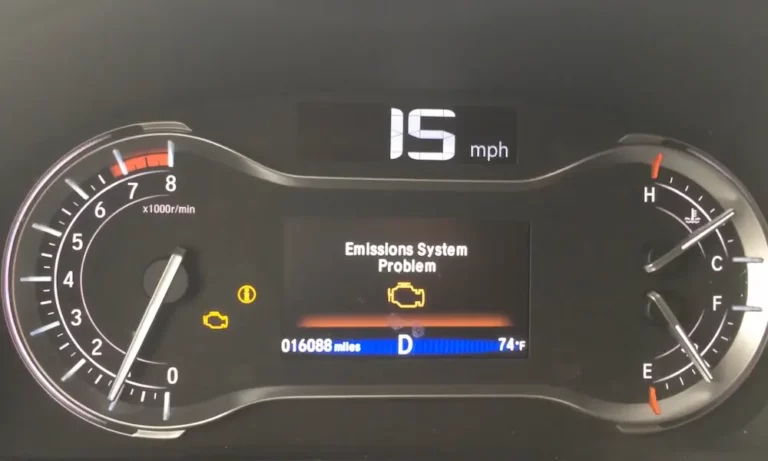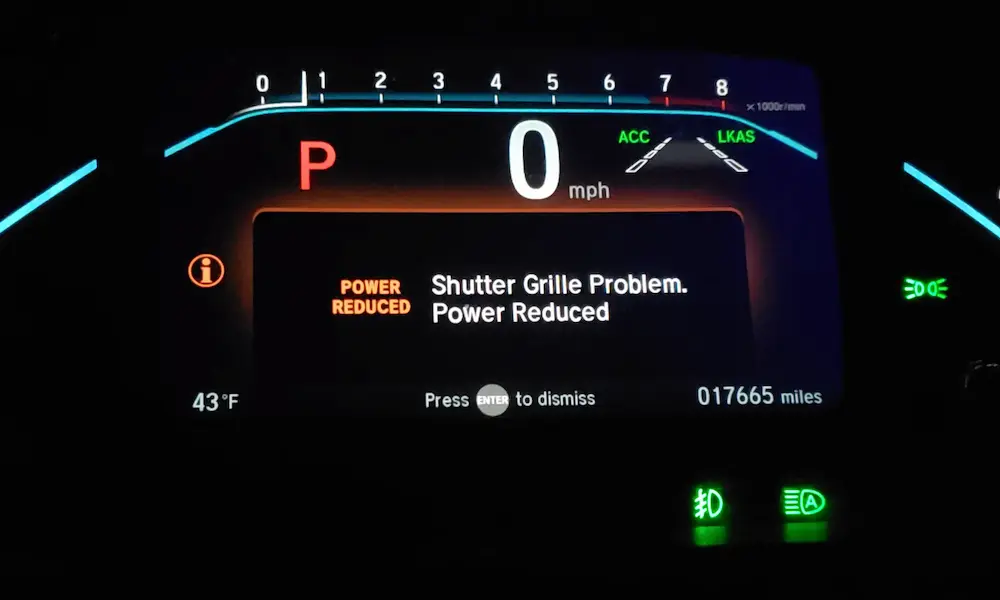Facing an emission system problem in your Honda Pilot can be frustrating. This issue often relates to malfunctioning parts like the catalytic converter or fuel injectors. Ignoring the warning light can lead to more trouble down the road. Understanding the common causes will help you determine the best course of action. Dive into the article to explore practical solutions and keep your Honda Pilot running smoothly.
Understanding Your Honda Pilot Emissions System
Your Honda Pilot’s emissions system is crucial for controlling pollution and maintaining efficiency. It includes several key components such as the catalytic converter and oxygen sensors. Each part plays a vital role in reducing harmful emissions.
Components of the Emissions System
The emissions system in your Honda Pilot is designed to limit the release of harmful gases. Key parts include the catalytic converter, oxygen sensors, and the exhaust manifold.
The exhaust manifold gathers exhaust gases from multiple cylinders into one pipe. The catalytic converter then transforms harmful gases into less harmful emissions. Oxygen sensors monitor oxygen levels in the exhaust to ensure the engine runs efficiently.
The Role of the Catalytic Converter
The catalytic converter is an essential part of your Honda Pilot’s emissions system. It converts toxic gases and pollutants into safer substances like carbon dioxide and water vapor.
This component uses a mixture of platinum, palladium, and rhodium to catalyze reactions. When working efficiently, it reduces the emissions released into the environment.
A malfunctioning catalytic converter can lead to increased emissions and reduced engine performance. This part should be regularly checked and maintained.
Importance of Oxygen Sensors
Oxygen sensors are critical for managing fuel efficiency and emissions. They measure the amount of oxygen in the exhaust gases leaving the engine.
If the sensors detect too much or too little oxygen, the engine’s computer adjusts the air-fuel mixture for optimal performance. Proper functioning of these sensors ensures that your engine uses fuel efficiently and produces minimal emissions.
If an oxygen sensor fails, you might notice warning lights on your dashboard and experience reduced fuel efficiency. Consider repairs if any issues arise.
Ensuring that these components work well helps maintain your Honda Pilot’s emission control system, reduces pollution, and improves efficiency. Regular check-ups can prevent problems like a warning light on your dashboard.
Common Emission System Problems and Symptoms
If your Honda Pilot shows an emissions system problem, there are several symptoms you might notice. These can range from warning lights to engine performance issues. Understanding these signs can help you address problems early and keep your vehicle running smoothly.
Warning Lights and Diagnostic Codes
One of the first signs of an emissions system problem is the check engine light on your dashboard. This light can indicate issues with components like the catalytic converter, fuel injectors, or oxygen sensor.
Conducting an OBD-II scan can help pinpoint the specific issue by revealing diagnostic codes. These codes identify the root cause of the problem, making it easier for technicians to diagnose and fix the issue. Ignoring these codes might lead to more severe problems over time, so it’s crucial to address them promptly.
Engine Misfires and Performance Issues
Emissions system problems can also lead to engine misfires. When an engine misfires, the engine might have a rough idle or hesitate during acceleration. These symptoms can result from incomplete combustion, which impacts your vehicle’s overall performance.
Misfires can lead to potential engine damage if not addressed. It’s important to investigate performance issues as soon as possible to mitigate damage and prevent costly repairs. Keeping an eye on the performance of your vehicle will help catch these kinds of problems early.
Fuel System Faults
Your fuel system plays a crucial role in maintaining emissions standards. Issues with fuel injectors can affect how fuel is sprayed into the engine, leading to poor combustion. This can result in increased emissions and decreased fuel efficiency.
The check engine light may also indicate problems with the fuel system, which will be confirmed during an OBD-II scan. Faulty fuel injectors can lead to other issues like excessive exhaust emissions and higher fuel consumption. Addressing these faults early can help maintain optimal engine performance.
Exhaust System Irregularities
The exhaust system is key to controlling emissions. Problems in this system can lead to irregularities, causing your Pilot to emit higher levels of pollutants. Issues can arise from a malfunctioning catalytic converter or damaged exhaust pipes.
Regular maintenance can help spot exhaust system problems before they become severe. A poorly functioning exhaust could contribute to a failed emissions test and increased pollution. Ensuring everything is in proper working order will save you from more significant issues down the line.
Causes of Emissions System Problems in Honda Pilots
Honda Pilots can experience emissions system problems due to several key parts failing or malfunctioning. Common areas of concern include the catalytic converter, oxygen sensors, spark plugs, and air intake systems. Understanding these components can help you identify and address issues effectively.
Catalytic Converter Failures
The catalytic converter is vital for reducing harmful emissions from your vehicle. In Honda Pilots, a catalytic converter issue might arise when it becomes clogged or damaged, leading to decreased engine performance or increased emissions. This component ensures the conversion of harmful gases, like carbon monoxide, into less harmful substances. Blockages can occur due to excessive carbon buildup, often resulting from unburned fuel.
You might notice a rotten egg smell, decreased acceleration, or even illuminated warning lights if there’s a problem. Regular maintenance and addressing issues like a faulty oxygen sensor or misfiring spark plugs early can prevent converter damage.
Oxygen Sensor Malfunctions
Your Honda Pilot relies on oxygen sensors to monitor and adjust the air-fuel mixture for efficient combustion. Oxygen sensor failures can disrupt the balance, leading to poor fuel economy and increased emissions. These sensors send data to the engine’s computer to optimize the mix, so when they malfunction, the vehicle can’t adjust correctly.
Common signs include poor fuel mileage, rough idling, or stumbling acceleration. Replacing faulty sensors promptly can restore performance and prevent further engine damage.
Spark Plug and Ignition Issues
Spark plugs play a crucial role in igniting the fuel-air mix in your engine. Faulty spark plugs or ignition issues can cause misfires, reducing engine efficiency and increasing emissions. When spark plugs are worn or dirty, they may not spark effectively, leading to incomplete combustion.
Look out for symptoms like sluggish acceleration, difficulty starting, or a rough idle. Regularly inspecting and replacing spark plugs can help avoid these emissions-related problems. Keeping the ignition system in good shape is essential for maintaining optimal engine performance and emissions control.
Air Intake and Filtration Problems
A clean and efficient air intake system is necessary for good vehicle performance. A dirty or clogged air filter can restrict airflow, causing poor engine performance and increased emissions in your Honda Pilot. The air intake system must provide clean air for combustion; when it’s clogged with dirt or debris, the engine struggles to “breathe.”
Common indicators of a problem include reduced power and unusual engine noises.
Regularly changing your air filter is a simple yet effective way to prevent these issues. Ensure that your air intake is free from obstructions to maintain smooth and efficient engine operation.
Repairing Your Emissions System
Taking care of your emissions system ensures a smooth running vehicle and helps you avoid unnecessary engine trouble. Faulty components, lack of maintenance, or outdated software can lead to issues that affect your vehicle’s performance and efficiency.
Replacing Faulty Components
When dealing with emissions problems, checking for faulty parts like injectors or catalytic converters is essential. Worn-out spark plugs or a clogged air filter can also lead to issues. Ignoring these elements could cause more severe problems in the long run. Replacing these parts can be a straightforward fix that prevents further damage. You might also encounter problems with cylinder-deactivation hardware, which affects fuel efficiency. A visit to a mechanic can help you pinpoint the problem and decide whether you need part replacements.
The Importance of Regular Maintenance
Regular maintenance plays a crucial role in keeping your emissions system working well. Checking components such as the air filter or spark plugs regularly can extend their lifespan. Keeping an eye on the VCM (Vehicle Cylinder Management) can also prevent system failures. Maintenance involves inspecting for leaks or damage, which helps catch problems early. Routine care not only keeps your emissions system efficient but also enhances your overall driving experience.
Software and Hardware Updates
Sometimes, fixing the emissions system isn’t just about hardware. The PCM (Powertrain Control Module) might need a software update to improve engine performance and efficiency. These updates can often resolve stubborn issues where hardware fixes alone don’t suffice. Checking for updates periodically ensures your vehicle’s systems remain current and effective. Visiting a dealership or a trusted mechanic can get your system up to date and performing optimally.
Preventative Practices for Emissions Issues
You can keep your Honda Pilot running smoothly by following some easy preventative practices. Regular maintenance can help you prevent emissions system problems before they start.
Check your gas cap for a snug fit. A loose gas cap can cause emissions issues, letting fuel vapors escape. Ensuring it’s tight and undamaged prevents leaks.
Keep an eye on the fuel filler neck. A corroded fuel filler neck can lead to leaks. Regular inspections help spot problems early, allowing for timely repairs.
Make sure to replace the air filter regularly. A clean filter ensures the engine gets enough air, reducing emissions. Check your user manual for the recommended replacement intervals.
Have your vehicle’s oxygen sensors tested periodically. These sensors keep the engine running efficiently, reducing harmful emissions.
Regular tuning of your Honda Pilot can identify and fix minor issues before they become big problems. This includes checking spark plugs and the ignition system.
Routine check-ups with a professional can help you spot issues that you might overlook. Trained mechanics have the tools and knowledge to keep your emissions system in top shape.














